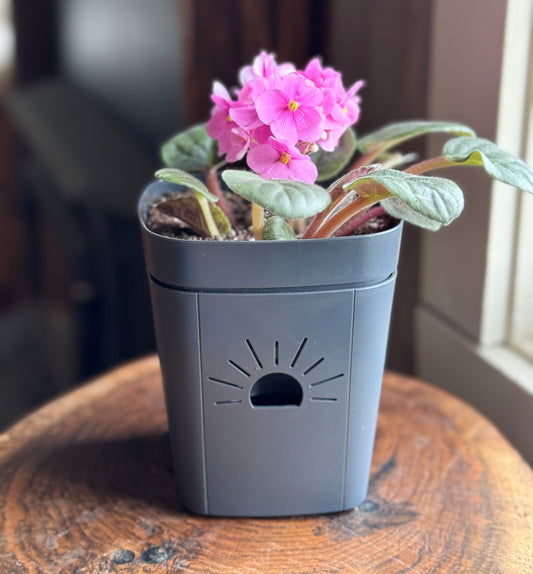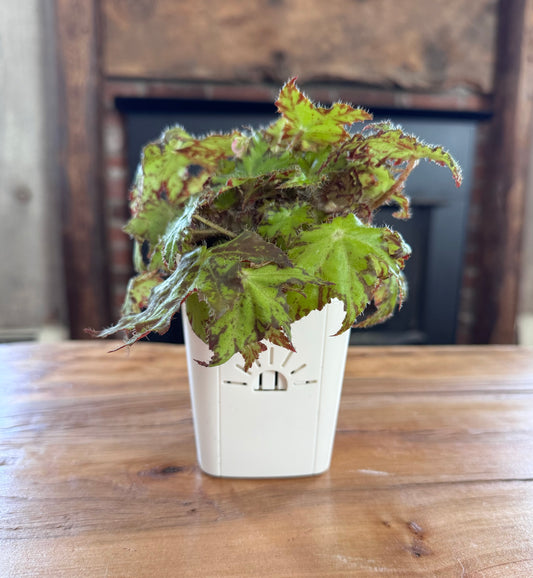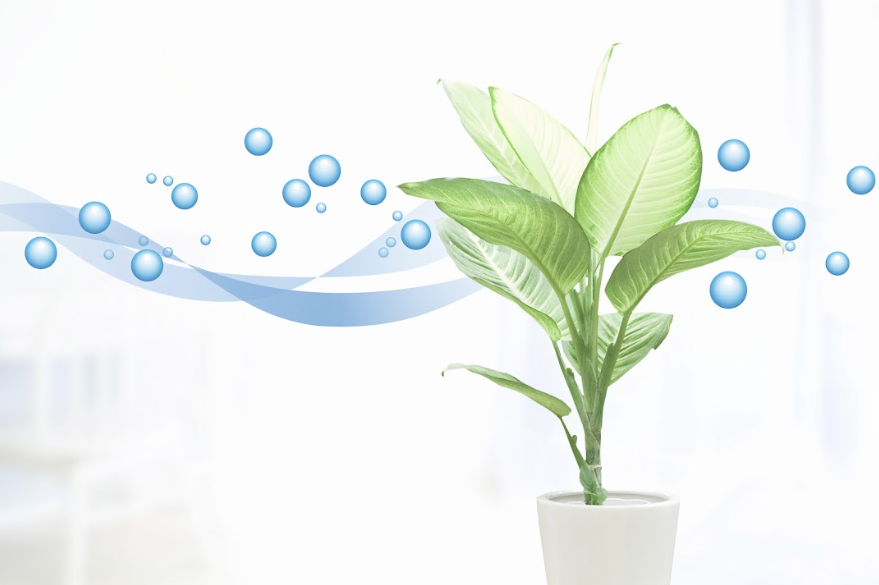Origins
The Zamioculcas zamiifolia is a tropical perennial plant that is native to eastern Africa, from southern Kenya to northeastern South Africa. It has many common names, including the Zanzibar gem, welcome plant, Zuzu plant, ZZ plant, aroid palm, emerald palm, and eternity plant. This attractive and easy-care ornamental plant was first described as Caladium zamiifolium by Loddiges in 1829 before being moved to the new genus of Zamioculcas by Heinrich Wilhelm Schott. The commercial propagation of this species started around 1996 on a wide scale when Dutch nurseries began growing it for sale. Its popularity with growers means it can now be found in gardens across much of the world.
Zamioculcas plants are tropical vegetation that is perennial and has thick, shiny leaves of emerald green. These leaves grow in an oval shape in pairs on upright branches. During the growing season, they create 2 to 3 new stems. These plants grow in grasslands and riverbanks, and even dry forests because of the rhizomes beneath them, which are comparable to potatoes.
Light
Requirements
Zamioculcas plants are known for their ability to thrive in dim, indoor areas. Nevertheless, it is best for them to receive some amount of light. Otherwise, their leaves may become too long, yellow, or fall off. Inadequate sunlight may also lead to uneven or disproportionate growth as the plant seeks more light.
In its natural environment, the Zamioculcas zamiifolia plant can tolerate a range of lighting conditions. When kept indoors, it does best when exposed to bright but indirect light. Outdoors, the same level of lighting is ideal, but direct sunlight should be avoided in order to prevent the leaves from getting scorched.
Genus Summary
| GENUS | Zamioculcas |
| COMMON NAMES | ZZ plant, Aroid palm. |
| LIGHT | Bright, indirect light |
| WATER SCHEDULE | Naked Root = 21 days |
| WATER REQUIREMENTS | Conventional planter, allow the soil to dry thoroughly before watering. |
| HUMIDITY | Average. Above 40 percent |
| TEMPERATURE | 64-79°. Never below 60°F. |
| FEEDING | 1x month |
| TOXICITY | Mildly toxic to animals and humans |
| PESTS | Aphids and fungus gnats, rarely. |
| DISEASES | Tuberous root rot from overwatering and lack of root zone aeration. |
| POT | Chose a pot with airflow around the thick rhizomatous roots and a bottom watering reservoir to deter fungus gnats. |
| SOIL | Chunky and free draining. Half orchid bark and half cactus mix work well. |
| FERTILIZER | Twice per growing season 10-10-10 |
| PROPAGATION | Stem or leaf cuttings or division |
| PRUNING | Not needed |
| SIZE | 8 inches to 48 inches indoors |
Water Requirements
When growing Zamioculcas in a Naked Root planter, follow a 21-day watering schedule.
The tuberous roots of Zamioculcas plants have the unique capability to store moisture, giving the species a high degree of drought resistance. As such, it is important to only water the plant when the soil is dry, as too much water can be harmful.
If your ZZ plant is in an area with lots of light, you should water it more often. If it’s in a shady or partially sunny area, then you should water it less. It’s best to wait until the soil is 2 inches dry before watering again, as the ZZ plant is drought-tolerant. Watering should occur in the morning, and use any method you prefer, but do not over-water, as this leads to tuber rot.
Humidity
For optimal care, Zamioculcas plants should be kept in an environment with mid-to-low humidity of approximately 40%, which many homes naturally have. In the winter months, it is recommended to place a humidifier near the plant to help reduce the dryness caused by the heating season. During this season, be especially mindful of overwatering.
Temperature
Zamioculcas plants are incredibly hardy and able to survive outdoors in temperatures as low as 60°F, though optimal growth is achieved at slightly higher temperatures between 64-79°F. In fact, increasing the temperature can increase leaf production for this plant species.
Toxicity
The sap secreted by Zamioculcas zamiifolia leaves can cause skin irritation and should be handled with gloves. It is not fatal if ingested, but it will cause vomiting and diarrhea. As such, those with children or curious pets are advised to consider other indoor plants that are less toxic in nature. Though this plant may make the list of poisonous and toxic plants, its effects are far from lethal. When caring for any type of ZZ houseplant, one should always take caution when handling them, as well as supervise any children or animals around it to ensure that no accidental ingestion occurs.
Pests and Diseases
Pests are rare in Zamioculcas plants. Aphids and fungus gnats are the most common pests you may encounter on Zamioculcas plants. To get rid of aphids, spray them off with a jet of water, then apply neem oil to the entire plant. For fungus gnats, choose a pot with a bottom watering reservoir and keep the top one inch of soil dry at all times. This will kill all remaining fungus gnat larvae.
Root rot is the only disease to watch out for when caring for a ZZ plant. This fungus is common in plants that have poor air circulation and are overwatered, and it thrives in warm air during the summer months. If the leaves are yellowing and the stems are soft, this could be a sign of root rot. Usually, removing the damaged parts and reducing the amount of water should help. However, sometimes, changing the growing medium and adding a bit more sand for drainage is necessary. If symptoms do not improve, get rid of the plant and its associated media, sanitize the container and let it air out before using it again.
Pot
Excellent airflow is necessary around the tuberous roots of Zamioculcas. A container with a bottom watering reservoir will help prevent fungus gnats. Choose a pot with ventilation in the root zone, as this is how they grow in their natural environment.
Soil
Zamioculcas plants love soils with a lot of chunks, rocks, and other inert materials for excellent drainage. A potting soil mix containing pumice, perlite, or wood chips is great for them. You can also add a bit of compost and sand to give them extra nutrients and drainage. One good mixture is to purchase a bag of orchid potting soil and a bag of cactus potting soil and mix them together 50/50. They cannot handle being in waterlogged soil for too long, so be sure to provide good draining media. ZZ Plants need consistent nutrients and prefer a soil pH of 6.0 to 7.0.
Fertilizer
When fertilizing your Zamioculcas plant, it is important to do so sparingly – just a few times a year during the active growing season (spring through fall). During the winter months, when your plant is in dormancy, you should avoid fertilizing altogether, as plants will not be able to absorb extra nutrients. Those big beefy underground tubers hold onto both water and food, so err on the side of under-fertilizing.
The best type of fertilizer to use for this genus of plants would be either a 20-20-20 or 10-10-10 balanced liquid fertilizer. This type of fertilizer includes an equal ratio of nitrogen (N), phosphorus (P), and potassium (K), which are essential elements for proper growth and development. For optimal results, make sure that you dilute the concentrated liquid according to package instructions before applying it around the base of the plant.
Propagation
You can propagate your Zamioculcas by either stem or leaf cuttings or division.
To propagate a ZZ plant by stem cuttings, take a healthy stalk and cut it at the base with a clean pair of pruning shears. Place the cutting into a glass of water and keep it somewhere with bright indirect light. Change the water every few days for 3-4 weeks. Once the roots have grown to one inch, transplant the cuttings into potting soil with two inches between the root and the bottom of the pot.
Propagating Zamioculcas zamiifolia plants can be done through leaf cuttings as well. First, the base of the leaves should be put into damp, rocky soil. Then the pot should be sealed in a plastic bag. Although the leaves may eventually decompose, bulb-like structures will form in the soil, and these can be used to create new plants. This process may take up to one year, so much patience is required. Alternatively, the plant can be propagated by dividing it when it gets very large.
Pruning
Pruning a Zamioculcas plant is rarely necessary since these plants generally grow without regular pruning. However, if you notice any diseased parts of the plant or yellowing leaves, trim them off in order to keep your plant healthy. When pruning, make sure that you use sanitized shears and cut right at the soil line so as not to damage other parts of the plant. This will ensure that all of the affected areas are removed completely, and your Zamioculcas can continue growing strong and healthy!
10 Striking Varieties and Cultivars
The ZZ Plant (Zamioculcas zamiifolia) is an ideal choice for novice gardeners, as it is quite resilient and can withstand months of neglect. You may love them so much you want to collect them all. Below, we have compiled a list of 10 varieties of ZZ Plants.
Zamioculcas zamiifolia – Emerald Palm – The Emerald Palm is a great houseplant to own as it requires minimal care and can easily be found in garden centers, making it one of the most popular Zamioculcas plants around. This species has dark green leaves, with new leaves arriving in lime green, giving it an eye-catching appearance. With proper care, you’ll have a beautiful-looking Emerald Palm that will add life and beauty to your home for up to ten years.
Zamioculcas zamiifolia ‘Dowon’ – Also called the ZZ Raven. This cultivar was created by Costa Farms and has leaves so dark that they look nearly black, with a purplish sheen. They are highly glossy and contrast beautifully against the new leaves, which grow in chartreuse green.
Zaioculcus zamiifolia ‘Zenzi’ – This is a smaller cultivar that is great for small spaces. It reaches a maximum height of 14 inches tall. The leaves are very dense, giving them a bushy appearance. Each leaf curls downward at the tip and is green and glossy with raised veins that make the leaves look plush and slightly quilted.
Zamioculcas zamiifolia ‘Luckywhit’ – This cultivar has yellowish-green leaves that are more rounded than other ZZ plants. It grows 24 inches tall when mature. The leaves are a mixture of true green, gold, and white variegation.
Zamioculcas zamiifolia’ Chameleon’ – A new variety of Zamioculcas, the Chameleon ZZ Plant, is making a splash with its bright yellow-gold new growth, which matures to a deep dark green. Like other ZZ Plants, the Chameleon is one of the hardiest houseplants you can grow. It can tolerate low light, low humidity, and infrequent watering. However, it will thrive and grow faster if it is given adequate light and regular fertilization. While it grows relatively slowly, the Chameleon ZZ Plant can reach 5 feet tall or more over time, making it an impressive floor plant. In frost-free regions, it can even be grown outdoors in a shaded area.
Zamioculcas zamiifolia’ Dark Zamicro’ – In 2013, a unique mutation of the Zamioculcas plant, known as ‘Dark Zamicro,’ was found in the Netherlands. It is characterized by its upright and compact growth, smaller leaves, and deep black glossy leaves. The ideal temperature for this ZZ plant is 68 to 86 degrees Fahrenheit, and it develops several basal rosettes per plant.
Zamioculcas zamiifolia’ EDZAMDARK1′ – ‘EDZAMDARK1’ is a unique type of Zamioculcas plant that was discovered in the Netherlands in 2012. It has a compact growth habit and an abundance of dark green foliage, unlike the other varieties. This plant can be propagated successfully through leaf cuttings and has been found to be consistent and dependable in successive generations. It features numerous pinnately compound foliage that grows directly off of tuberous rhizomes, and it has large, broad elliptical leaves and dark green petioles.
Zamioculcas zamiifolia ‘HANSOTI13’ – A new and unique type of Zamioculcas referred to as ‘HANSOTI13’, is presented with features including a compact growth, an urn-shaped appearance, and glossy, dark green foliage. It has an especially short distance between internodes, contributing to its compactness and more leaflets per leaf. The leaves are strong, upright, and curved in such a way that they form an urn shape. Additionally, the leaves are a shiny dark green color. In 2009, Ashish Hansoti discovered and chose a single, small green leaf from a variegated plant grown in a plastic greenhouse in Vangani, India. This was the beginning of the new Zamioculcas variety, which is often used as an indoor decoration. The mutation is natural and has been patented.
Zamioculcas zamiifolia ‘Heemzamio’ – The Zamioculcas cultivar ‘Heemzamio’ is distinct in its upright, clumping growth habit, moderately vigorous growth, and glossy leaflets that are dark grey-green and purple when viewed from a distance. The cylindrical leaf axis is also dark grey-green. This particular plant was discovered and selected by the inventor on July 10, 2012, in a greenhouse in De Kwakel, Netherlands.
Zamioculcas zamiifolia ‘EDZAM1701’ – The ‘EDZAM1701’ variety of Zamioculcas is a new and remarkable type of plant that boasts a tall, vertical growth structure, with abundant light green and glossy leaflets attached to very light green petioles. It is possible to successfully propagate this new plant by taking leaf cuttings, and it has demonstrated its uniformity and consistency in the subsequent generations produced through asexual reproduction. In 2014, this new Zamioculcas plant was found in a nursery located in Maasdijk, The Netherlands. The following year, an individual of the species showed remarkable growth qualities and was examined separately to ensure that the characteristics were both unique and reliable.
Summary of Zamioculcas Plant Care
The Zamioculcas plant has roots that are capable of storing moisture, making it a drought-resistant species. Take care to limit watering to prevent tuber root rot and pests. The soil should be mixed with chunky, rocky, and inert materials to ensure good drainage and put into a pot with excellent aeration. Provide fertilizer twice per year, bright indirect lighting, and average indoor humidity over 40 percent.





 Verified Buyer
Verified Buyer









